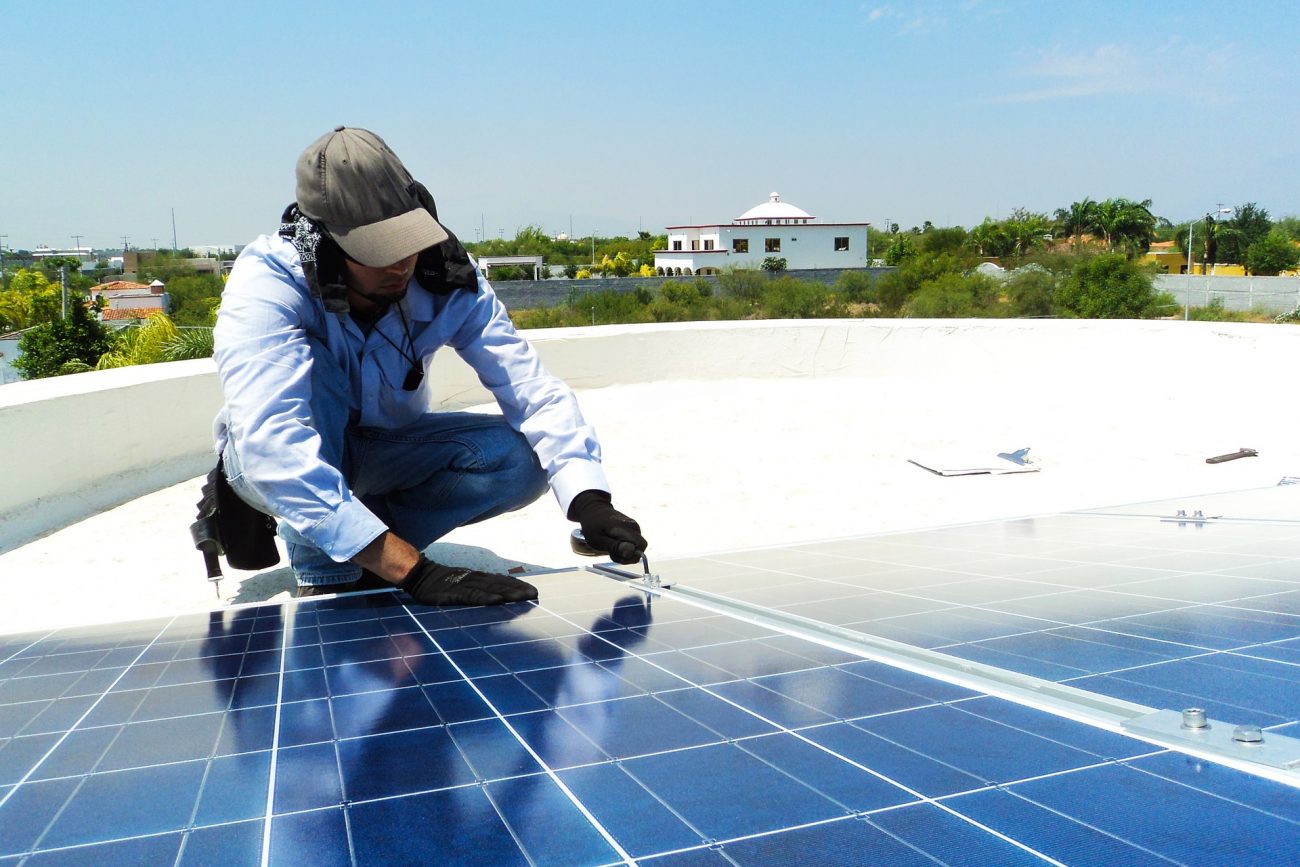Understanding the Three Types of Solar Inverters
Solar panels are the visible part of a photovoltaic system, but there are many other key components. Inverters are very important, since they convert the direct current output of solar panels into the alternating current required by most electrical devices. There are many brands of solar inverters, but they can be classified into three main types.
Depending on how inverters connect with solar panels, they can be classified into string inverters, microinverters, and power optimisers. All are designed to convert DC power into AC, but there are differences in how they collect electricity. Like in any engineering decision, each type of inverter has advantages and disadvantages. This article will provide an overview of the three solar inverter types.
How Do String Inverters Work?
Like their name implies, string inverters connect with solar panels that are wired in series circuits, also called strings. In other words, the individual voltages of solar panels are added up, and they carry the same electric current. Since this is a very simple configuration, string inverters are the most common type, and also the most affordable.
- Depending on how a string inverter is designed, it may have connections for several strings of solar panels.
- A small residential installation may only use one string, while a medium-sized commercial system may use a single inverter with multiple strings. Finally, a large solar array will likely require several inverters, with multiple strings each.
The main disadvantage of string inverters is having to wire groups of solar panels in dependent circuits. Since the same current travels through all the panels, any issue will affect all of them. For example, if one solar panel in the circuit has reduced performance due to shading or a malfunction, all others lose productivity. However, this is not an issue when the solar array layout is designed to avoid shadows.
Wiring solar panels in strings can cause a slight performance drop, but this is compensated by lower equipment costs. Also, since string inverters use simple connections, their maintenance is simpler and there are less components that can fail.
Modern string inverters come with monitoring features, which means they can detect performance issues. However, since solar panels are wired in string circuits, the monitoring function can identify the affected circuit but not the specific panel.
How Do Microinverters Work?
Microinverters are smaller units that connect directly to solar panels, and this allows an individual optimisation of electricity output. Unlike string inverters, microinverters are connected in parallel, which means their voltage is shared and their current adds up. In other words, each solar panel becomes an individual source of AC power.
Solar power systems that use microinverters are the easiest to expand, since each panel has an independent connection. In other words, there is no need to rearrange string circuits or inverter connections. When an expansion is required, it can be accomplished by simply adding solar panels with their respective microinverters, in a parallel connection.
The main advantage of microinverters is maximising electricity output. Since solar panels operate independently, shading and malfunctions only affect one panel in the array. However, this comes at a high cost – if a solar array uses 1,000 panels, it also needs 1,000 microinverters. While performance is higher, the installation is more complex and maintenance is more demanding, compared with using a smaller number of string inverters.
- Generally, microinverters are recommended when a solar array is subject to uneven sunlight due to issues like shading or roof angles.
- The performance gain of microinverters is minor when all solar panels operate under similar conditions, and conventional string inverters are recommended in these cases.
Built-in monitoring is also available with microinverters, and each unit must be monitored individually. In this case, when a malfunction occurs, the system can detect the exact solar panel that has been affected.
How Do Power Optimiser Inverters Work?
Power optimiser inverters combine features of string inverters and microinverters. Just like in string inverters, the solar panels are wired in series circuits, and some inverter models are designed for several circuits. However, each solar panel has an individual electronic module, which can achieve some optimisation.
In other words, power optimisers offer a middle ground between the low cost of string inverters and the performance boost of microinverters. The monitoring capabilities are similar to those of microinverters, since the power optimiser modules can be tracked individually. When a malfunction occurs, the affected solar panel is evident.
Just like microinverters, power optimisers are useful when solar panels are subject to variable sunlight conditions or uneven shading. When solar panels are subject to similar conditions, the potential improvement is less and string inverters are typically used.
Conclusion
Solar power systems are a good investment regardless of the inverter type used. However, string inverters are specified in most projects due to their simplicity and lower cost. While microinverters and power optimisers offer a performance gain, the effect is small when all solar panels get equivalent sunlight and shading. On the other hand, when a roof has different orientations and shading profiles, a string inverter may experience a higher drop in performance, and solar power companies may recommend microinverters or power optimisers.
Another advantage of microinverters and power optimisers is more accurate monitoring: they can identify the specific solar panel affected by a fault, while string inverters can only locate the circuit that contains the affected panel.
